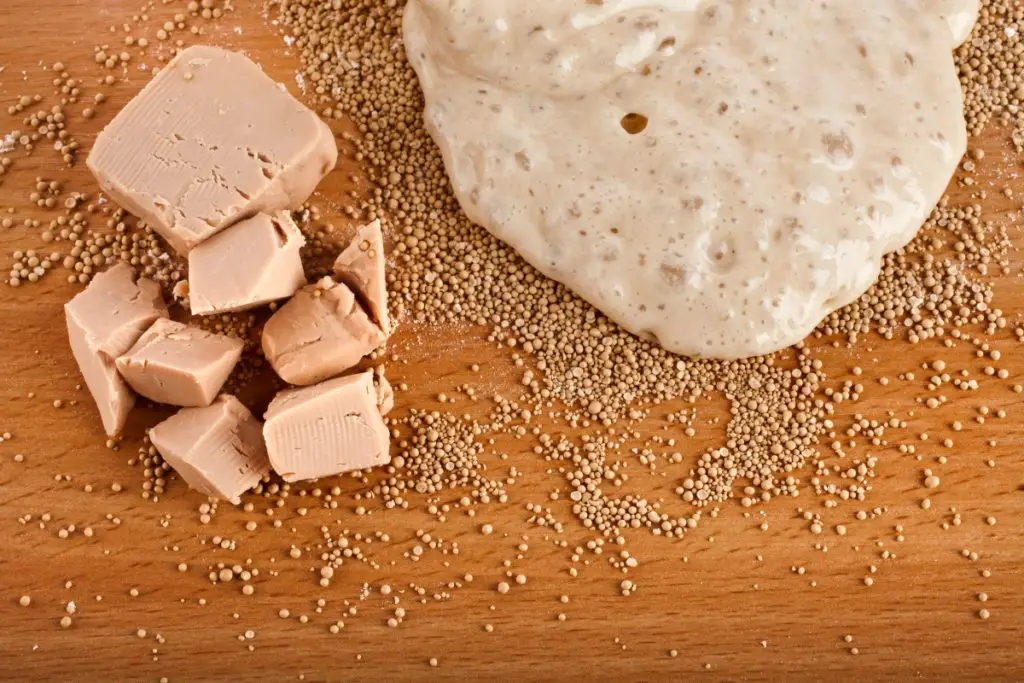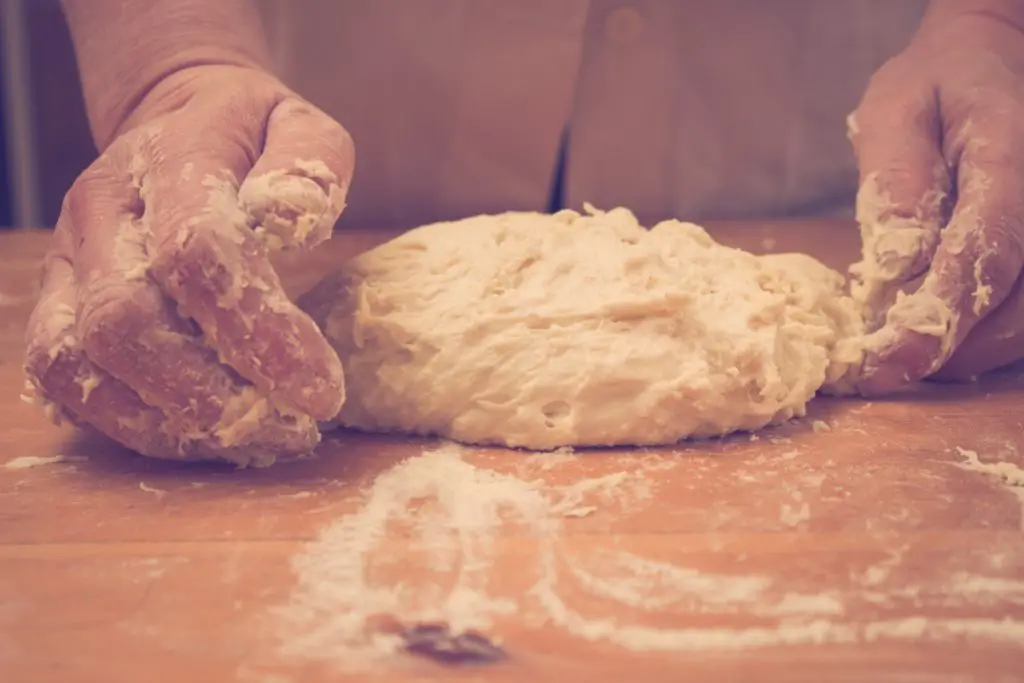Yeast, tiny magical grains that turn flour and water into bread and other dough to create anything edible from croissants to pizza bases, can be astounding and intimidating to work with. Often, in baking, you lose your place in the recipe, and before you know it, you have added too much yeast.
Too much yeast in dough will affect the desired result in your bread baking experience enormously. Fortunately, thanks to many experts out there, you can do several things to rectify this problem before entirely giving up and driving to your local bakery to buy some fresh bread.
Yeast has been cultivated for various reasons, and baking in particular over many years. The packet of store-bought yeast you buy will be good enough to make the perfect loaf of bread.
Since baking bread at home is such a sought-after kitchen skill, it is essential to know what happens if you misread the recipe or somehow have added too much yeast in your dough and how to fix it.
What Happens If You Add Too Much Yeast To Dough

Adding too much yeast to dough could prevent the dough from rising properly by releasing the gas from the dough before the flour is ready to expand. This could result in poorly risen bread with a light crust that tastes yeasty and smells like beer! Too much yeast inhibits glutens’ ability to stretch.
Dough needs time for the gluten in the flour to develop. If you accidentally add too much yeast to your dough, the yeast will make the dough rise too quickly. This will cause the glutens of your flour not to develop entirely, causing your dough to become overly sticky.
For yeast to develop and release CO2, it makes your dough rise and gives it bubbles and structure. You have to ‘feed’ it flour to develop glucose and start the fermentation process of the dough.
Many recipes also include a tiny amount of sugar to speed up the process and help the yeast with the fermentation process.
You also add salt, not only for taste but to help the yeast function better. However, too much sugar or salt can also negatively affect yeast. That is why it is crucial that you follow the recipe when it comes to quantities.
What Happens If You Put Too Much Yeast to Bread Dough
If you have put too much yeast in your bread dough, the end result of the bread can have one or many of the following faults:
- It can smell and taste like yeast and not bread
- It can also smell and taste like alcohol since yeast is also used to make alcohol
- Be pale in color
- Have a ripped and cracked crust
- Have huge oven spring which can cause the bread to get stuck in the oven
- The huge oven spring can result in the bread sagging when you cut it or can even while it’s still in the oven
- The holes will be irregular throughout the bread crumb
- The bread’s quality will be low due to the dough being over gassy
What Happens If You Double Yeast in Bread Recipe
If you are mixing a double batch of bread dough, you will need to double all ingredients, not only the flour and water. That is because it will take double the work for the yeast to convert the flour into gluten and create a good loaf of bread.
If you double the yeast in the bread recipe by accident, it will have the same effect as mentioned above. Luckily you can fix it by following the instructions below.
It is also a good idea to let your bread dough rise enough time but not let it over-rise. Bread usually takes about 45 minutes to rise correctly. It can go 5 to 10 minutes, less or more, depending on the bread you are baking and the yeast you are using. The dough should about double in the first rise.
TIP: Not sure if you have all the necessary bread baking equipment at home? Check out my recommended picks below (Amazon links):
-
- Scale: Nicewell 22lb Digital Kitchen Scale
- Mixing Bowls: OXO Stainless Mixing Bowls Set
- Pastry Scraper: OXO Stainless Pastry Scraper
- Loaf Pan: OXO Non-stick Loaf Pan
- Kitchen Thermometer: ThermoPro Digital Thermometer
- Stand Mixer (optional): Kenwood Kmix Stand Mixer
TIP: Do you know what to do if you add too much water to in bread dough? Check out this article:
Too Much Water In Dough: What Happens And How To Fix It
How To Fix Dough With Too Much Yeast

The best thing to do when you have added too much yeast to your dough is to lower the dough’s temperature for the first rise. Because colder conditions slow down yeast production, the cooler temperatures will slow down the fermentation of the dough, giving the glutens enough time to develop.
To speed up cooling it down, you can place the dough in the fridge for 10 to 15 minutes while in the mixing process to help it cool down.
Underproof the dough with the second rise by not letting the bread rise fully for the second round. This way, it will give more opportunity to have a big oven spring without the bread crust cracking or sagging.
If you have not yet mixed in all the flour, try to incorporate a whole-grain flour of some sort. Whole-grain flour takes longer for the glucose to form, which will give your glutens additional time to develop.
If you know how much extra yeast you added, you can add more flour and water to bring the ratio closer together.
How To Fix Too Much Yeast In Bread Dough
To fix too much yeast in bread dough, you can look at the tips above to help you solve the problem.
Sometimes in bread baking, there are other reasons for having too much yeast in your dough and not only because you added too much yeast.
- Over raising the dough:
As mentioned, bread needs only a certain amount of time to rise for fermentation. If it over-rises, more yeast will develop, so ensure that you do not over-rise the bread and stick to the times in the recipe.
- Ensure utensils are clean:
Since we can find good and bad bacteria everywhere, it is crucial to ensure good hygiene when mixing and working with your bread dough. Ensure that utensils and surfaces are always residue free.
- Correct temperature:
When mixing dough, the water should be lukewarm, 105 to 115°F. When you go above 115°F, you risk the yeast dying, and it will not be activated if it is too cold. For storage temperatures should be 75 – 85°F.
- Correct kneading:
Properly kneading the dough is a vital part of the process to ensure you incorporate all the yeast evenly into the dough. The evenly mixed dough will result in an even texture throughout your loaf.
Conclusion
It is incredibly satisfying when you have baked a loaf of bread that looks good and tastes well.
There are various options and recipes out there when it comes to bread baking which can be overwhelming by itself. The best would be for you to experiment with different recipes and methods before finding what works for you.
Remember that whatever you plan to make with your dough, stick to the set-out ingredient list and times as per the recipe to get the best possible result.
TIP: If you are still not sure how much, when and why to add yeast in bread dough, check out the article below:
